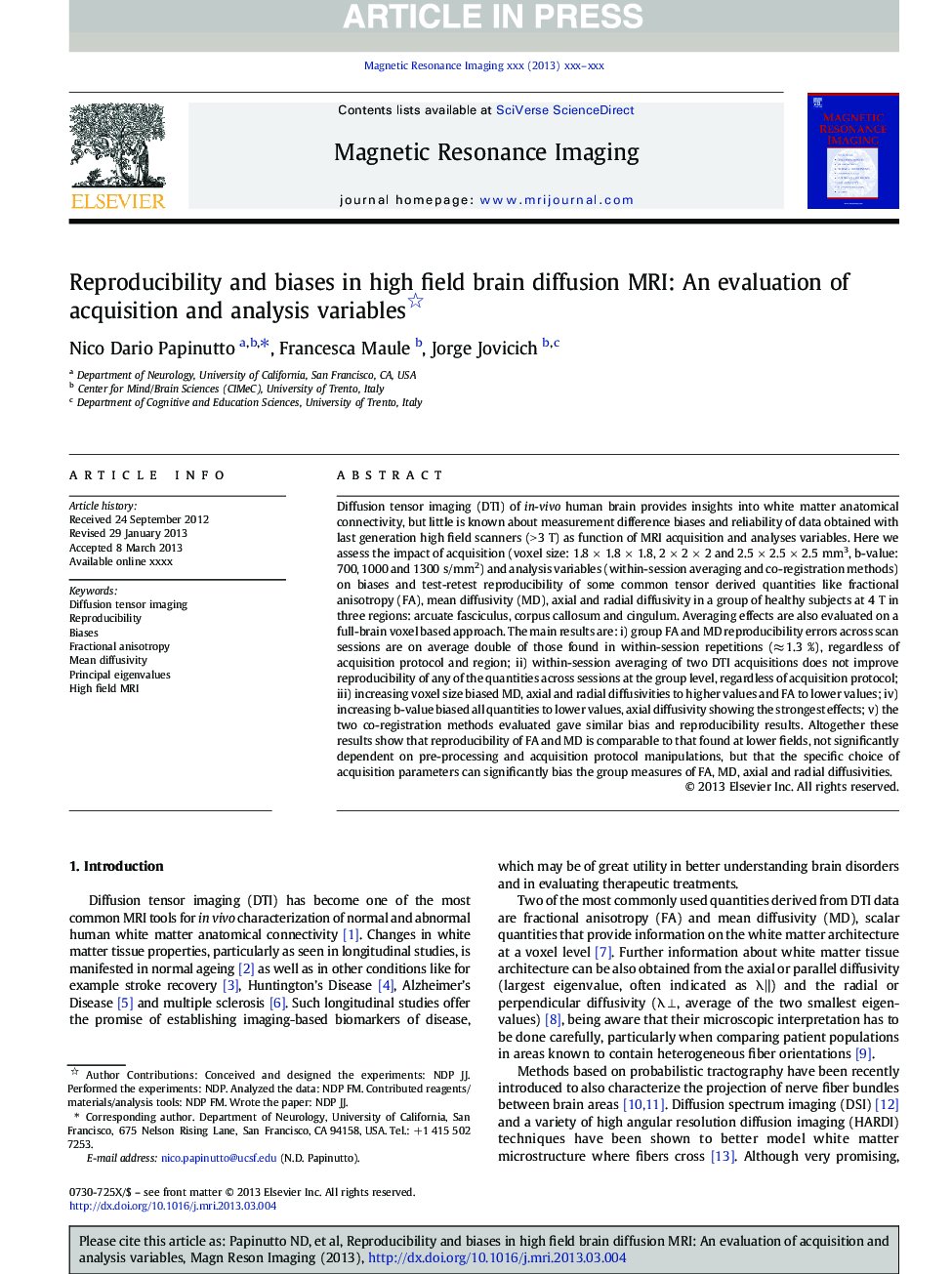| Article ID | Journal | Published Year | Pages | File Type |
|---|---|---|---|---|
| 10712667 | Magnetic Resonance Imaging | 2013 | 13 Pages |
Abstract
Diffusion tensor imaging (DTI) of in-vivo human brain provides insights into white matter anatomical connectivity, but little is known about measurement difference biases and reliability of data obtained with last generation high field scanners (> 3 T) as function of MRI acquisition and analyses variables. Here we assess the impact of acquisition (voxel size: 1.8 Ã 1.8 Ã 1.8, 2 Ã 2 Ã 2 and 2.5 Ã 2.5 Ã 2.5 mm3, b-value: 700, 1000 and 1300 s/mm2) and analysis variables (within-session averaging and co-registration methods) on biases and test-retest reproducibility of some common tensor derived quantities like fractional anisotropy (FA), mean diffusivity (MD), axial and radial diffusivity in a group of healthy subjects at 4 T in three regions: arcuate fasciculus, corpus callosum and cingulum. Averaging effects are also evaluated on a full-brain voxel based approach. The main results are: i) group FA and MD reproducibility errors across scan sessions are on average double of those found in within-session repetitions (â 1.3 %), regardless of acquisition protocol and region; ii) within-session averaging of two DTI acquisitions does not improve reproducibility of any of the quantities across sessions at the group level, regardless of acquisition protocol; iii) increasing voxel size biased MD, axial and radial diffusivities to higher values and FA to lower values; iv) increasing b-value biased all quantities to lower values, axial diffusivity showing the strongest effects; v) the two co-registration methods evaluated gave similar bias and reproducibility results. Altogether these results show that reproducibility of FA and MD is comparable to that found at lower fields, not significantly dependent on pre-processing and acquisition protocol manipulations, but that the specific choice of acquisition parameters can significantly bias the group measures of FA, MD, axial and radial diffusivities.
Keywords
Related Topics
Physical Sciences and Engineering
Physics and Astronomy
Condensed Matter Physics
Authors
Nico Dario Papinutto, Francesca Maule, Jorge Jovicich,
